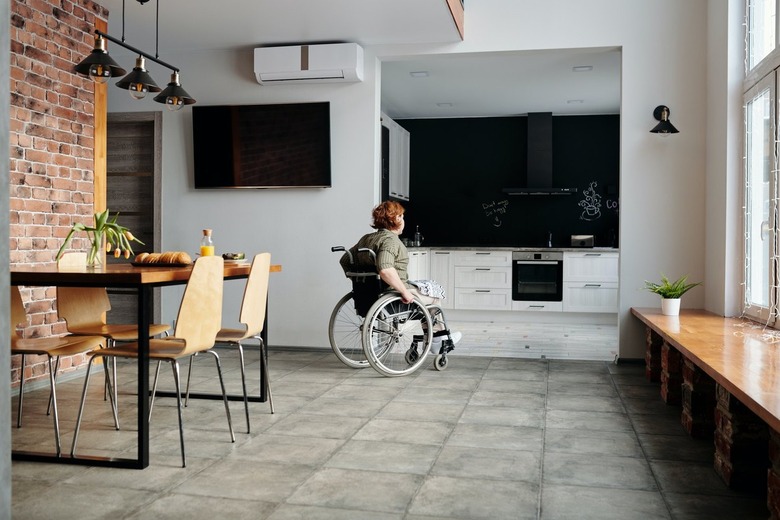4 Changes That Had To Happen For My Apartment To Meet My Accessibility Needs
We may receive a commission on purchases made from links.
I was 25 years old when I moved out of my mom's house, which isn't unusual these days. According to an analysis conducted by Pew Research Center, 52% of young adults ages 18 to 24 resided with one or both of their parents in July 2020 — the highest peak since the Great Depression. Personally, I was just excited to be out on my own because as a disabled person, people didn't expect me to leave my parent's home.
When most people move out, there are a few things they look for: location, affordability, safety. However, as a wheelchair user, I needed more, like accessible entrances, a larger apartment, reachable and accessible security options, and a safety route for emergencies. For the most part, I was able to check off everything on that list (my apartment is large enough to accommodate my wheelchair and has an accessible bathroom), but I noticed there were still needs of mine that weren't initially met. With the help of my building managers, I was able to make these adjustments happen — not just for myself, but for other disabled and elderly residents.
Here are all the changes that had to be made for my apartment to be accessible. To be clear, this list is non-exhaustive and specific to my personal needs. Ultimately, there will always be more building managers can do to make living situations more accessible for all kinds of disabilities.
1. My Wheelchair
1. My Wheelchair
While this is outside the scope of my building managers' purview, it is still just as important. Around the time that I moved out, I was due for a new wheelchair, and my apartment was what I thought about when we started looking into the kind of wheelchair I'd need. I ended up with a chair that would allow me to survive in my specific apartment. So that I would be able to reach my cabinets when cooking and cleaning, I needed a wheelchair that would accommodate these heights.
2. The Parking Lot
2. The Parking Lot
As a disabled person, I take a medical van to all my appointments. When I first moved to my apartment, there wasn't a designated spot for the van to park and safely drop me or any other person off. That changed when, one day, I was dropped off right when a building manager pulled up in his car. He realized that it was dangerous for me to be dropped off in the middle of a parking lot, and the very next day, they started painting an accessible spot in the lot.
3. A Camera Doorbell With a Keypad
3. A Camera Doorbell With a Keypad
When I relocated to my current space, the intercom system was broken. That meant I couldn't check to see who was downstairs ringing my doorbell. Eventually, the building upgraded to a system that had a camera and a tenant-exclusive code system so I could open the door without a key. As a person who can only use one hand (and it's the hand I drive my wheelchair with), this was a huge help because I didn't have to fight with a key or wait for someone in the lobby to open the door.
4. The Door Handles
4. The Door Handles
My apartment was originally fitted with standard round knobs, which is what you typically see in most buildings, but I had problems opening doors with that kind of knob. It required more wrist work than I was able to give, so I ended up asking to have the doorknobs swapped out for ones with a lever that can be pushed down on. This fixture also allows me to unlock and slightly open the entrance, so I can then drive my wheelchair into the door to open it the rest of the way.
Moving out is difficult for everyone, and all people have their requirements, but when you're disabled, the process is different. Having these changes made has not only made my life more comfortable — it has allowed me to survive in my apartment.
